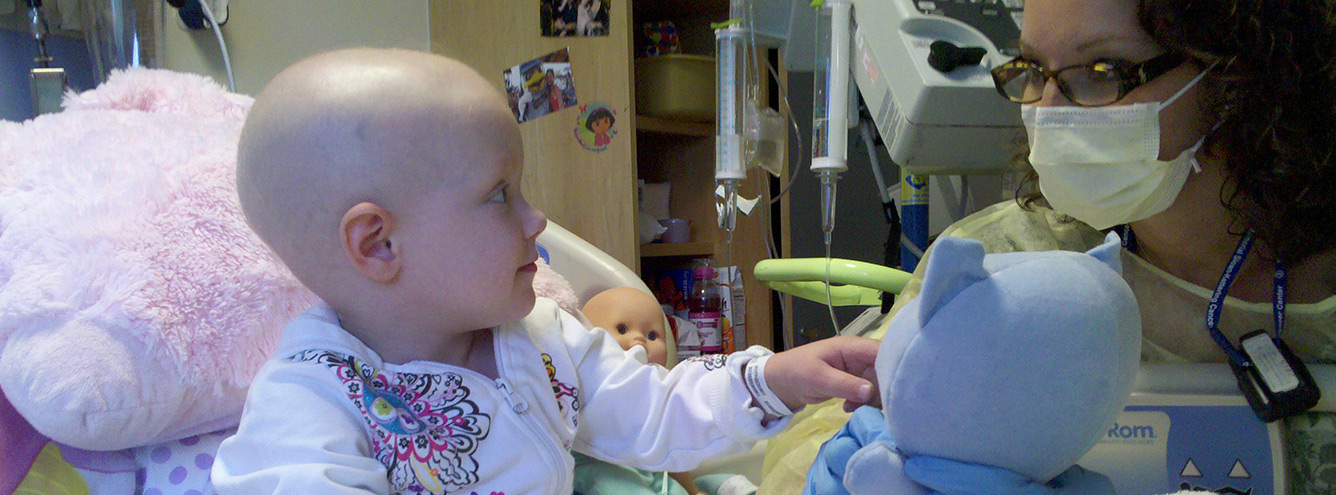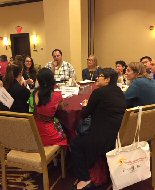Retinoblastoma is a journey that profoundly impacts patients and their families, from diagnosis, through treatment and recovery, and often throughout life. Recognizing and addressing their unique needs at all stages of care can dramatically improve medical outcomes and enhance quality of life.
Patients, survivors, and families are pivotal contributors to the understanding and improvement of care that prioritizes their experiences and needs.
Patient-led research is an innovative approach that positions patients and their families at the heart of research initiatives. A paradigm shift from traditional research methods, it emphasizes direct engagement with those who have lived experience, at every phase of research – from conception and design to implementation and dissemination of findings.
Differences from Traditional Clinical Research
Traditional clinical research often follows a top-down approach, where scientists and clinicians dictate the research priorities, questions, and methods. In contrast, patient-led research is collaborative, inclusive, and democratizes the research process. This approach ensures the research is directly relevant to the people it aims to benefit, and may also speed up the translation of findings into practical, impactful interventions.
The Importance of Patient-Led Research
Patient-led research bridges the gap between clinical studies and real-world experiences, ensuring that research priorities align with patient needs. It fosters a research environment that is more responsive, inclusive, and equipped to address the nuanced challenges faced by patients and survivors.
By involving patients in the research process, findings are more likely to be valid, relatable, adopted, and implemented, ultimately enhancing care and outcomes.
Improving Retinoblastoma Care through Patient-Led Research
Patient-led research offers vast potential in retinoblastoma care specifically, from early diagnosis to survivorship. For example, it can lead to the development of:
- Better information dissemination at different stages of care.
- More effective, less invasive treatment options.
- Improved psychosocial support systems.
- Mental health care and trauma support throughout life.
- Screening and earlier diagnosis of second primary cancers.
This patient-led approach ensures the voices of those who live with eye cancer and its effects daily guide the research focus, potentially uncovering areas that may be overlooked in traditional studies. Working together, scientists, clinicians, and patient families can shed light on the varied acute and long-term needs that change throughout the lifelong retinoblastoma experience, and drive development of targeted services to improve care, quality of life, and outcomes.
Embracing Accessibility and Diversity
Patient-led research will truly represent the retinoblastoma community when it includes voices from all walks of life in the population being studied. Overcoming barriers to participation will ensure the research reflects diverse experiences and needs.
eritable cancer syndrome with multi-generational impacts and differing perspectives in the same family. Trauma may influence a patient or family member’s research experience. Sight loss often further complicates an individual’s experience and the information they share in a medical or research setting. Discussing these concerns openly can help researchers, clinicians, and patient collaborators design and implement with sensitivity to the lived experience.
In our community where sight loss is a side-effect of the cancer and its treatment, designing research tools and methods for accessibility is vital. Working with blind and low vision survivors at the planning stage can ensure a respectful, informed, practical, and positive research experience for all involved.
Patient-Led Research in Action
The Canadian Retinoblastoma Patient Engagement Strategy is a prime example of patient-led research for our community, involving patients and/or family members throughout. Led by the Canadian Retinoblastoma Research Advisory Board (CRRAB), the strategy aims to:
- Share research results with patient families and survivors.
- Include a large diverse group of people affected by retinoblastoma in research.
- Promote research created and led by people affected by retinoblastoma.
The Canadian Retinoblastoma Research Community
The community is essentially a registry; a list of members in the retinoblastoma community. Joining involves completing a brief survey. As a registry member, participants can choose to receive updates on new research results, and engage in retinoblastoma research.
Canadian Retinoblastoma Research Advisory Board (CRRAB)
Established in December 2016, CRRAB embodies a collaborative effort among patient families, survivors, clinicians and allied healthcare providers, researchers, patient engagement experts, and policymakers. Together, they co-direct research that is relevant and has meaningful impact in the retinoblastoma community.
Retinoblastoma Research Champion
Research Champions are Rb survivors and patient family members who serve as ambassadors of the Patient Engagement Strategy and all its activities. Champion activities include:
- Sharing personal stories of Rb and the research experience through public-facing media channels like blog and social media.
- Promoting the Patient Engagement Strategy and its activities within the patient, medical, and research arenas.
“Top 10″ Retinoblastoma Research Priorities
Early in their work, CRRAB members agreed that identifying the top 10 retinoblastoma research priorities in Canada would be pivotal to developing meaningful patient-focused research.
A three-step project was initiated in 2017, inspired by the James Lind Alliance Priority Setting Protocol methodology.
- Patients, families, healthcare professionals, and researchers across Canada were asked: “What questions about retinoblastoma would you like to see answered by research?” Over 100 responses were submitted.
- Responses were collated and ranked by a steering committee of patients, families, healthcare professionals, and researchers to arrive at 30 questions.
- At an in-person workshop in December 2017, participants discussed and ranked the 30 questions. From this meeting, patients, families, healthcare professionals, and researchers jointly arrived at Canada’s Top 10 Retinoblastoma Research Priorities.
CRRAB is now diligently pursuing the many paths of research opening out from the Top 10 Priorities project. Through all its work, the community ensures that research is guided by the real needs and priorities of the people most affected by retinoblastoma across Canada.
In Part 2…
Part 2 focuses on the practical challenges of developing Patient-Led Research around the world, solutions to overcome the challenges, and how our global Rb community is leading the way forward.



